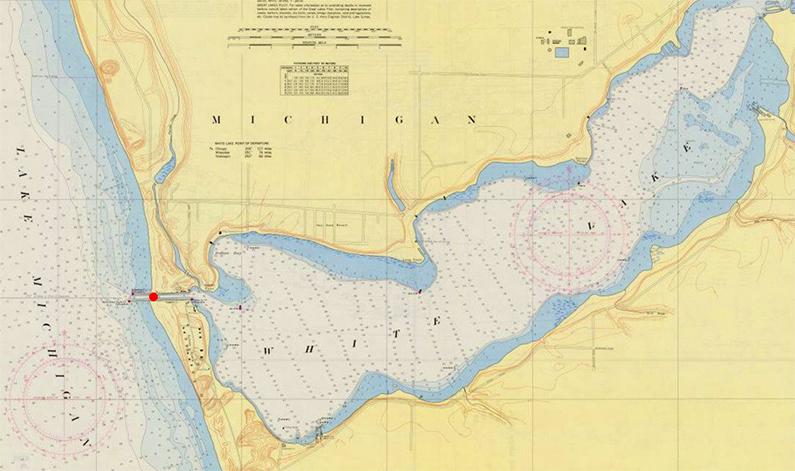Michigan has a new attraction—one that rose up mysteriously out of the water of Lake Michigan.
It is a skeleton but not the skeleton of a sea monster. It is instead the hulk of an old sailing vessel long hidden beneath the water.
The mysterious vessel emerged near the White River Light Station, a still-functioning lighthouse on the White Lake channel about halfway up the western side of the Thumb of Michigan. White Lake channel connects White Lake to Lake Michigan.
Sightseers have been flocking to White Lake since photos of the unidentified vessel showed up on social media.
An Historical Maritime Disaster
The L.C. Woodruff was a three-masted wooden barkentine built in 1866. A barkentine is a small bark—the type of sailing ship that has its first mast square-rigged, and the second and third masts rigged fore-and-aft.This ship was 170 feet long and displaced 548 tons.
The Woodruff had headed out from Chicago on Oct. 31 carrying a load of corn for its home port of Buffalo, New York. The ship made it halfway across Lake Michigan before it got caught in a tremendous storm.
By 8 p.m. the ship had sustained so much damage that it couldn’t cross the last half-mile to the safety of White Lake and had to drop anchor to try to ride out the storm offshore.
A tugboat motored out from White River Light Station to check on the anchored Woodruff. The tugboat captain saw that ship’s fore-topmast, jib-boom. and bowsprit had broken off, and all its sails had been shredded by the high winds.
Nonetheless, the Woodruff’s captain refused to abandon ship, confident he could cross the remaining distance once the storm abated.
Final, Fatal Disaster
Around 4 a.m., the Woodruff had started drifting towards shore, dragging her anchor, driven by the intense wind. By 9 a.m. the ship’s mizzen-mast and main topmast had snapped off and fallen in the water. The storm kept pushing the Woodruff shoreward until finally the ship’s keel hit the lake bottom.Pinned against the bottom and pummeled by the storm, the Woodruff began breaking up just a few hundred yards from the White River Light Station.
The captain and ten crewmen were trapped on the vessel.
Lighthouse keeper William Robinson and a group of volunteers made three attempts to reach the stricken ship and its trapped crew but the storm was too fierce. The lighthouse keeper’s small yawl had to turn back each time to avoid being sunk itself.

By nightfall, the ship was firmly aground about 150 yards offshore. Four sailors, assured they could pull themselves to shore via the rope and equally sure they would not last the night, jumped into the surging seas.
But the rope broke free of the ship with all four still clinging to it. Fortunately, midway between the ship and shore, the lifeboat was still attached to the line, although filled with water. The four men climbed onto the swamped lifeboat and the rescuers on shore reeled them in.
The four were pulled from the water alive—though one died the next day from head injuries he sustained when his head was smashed against the side of the sinking lifeboat.
Periodic Reappearance
There is no mystery as to why shipwrecks sometimes appear and then disappear. Strong storms and high tides sometimes shift the underwater sands, temporarily uncovering usually buried wreckage.Twice—in 1942 and again in 1974—the remains of what many believe to be the Woodruff were revealed by the shifting lakeside sands.
This could be the third time—but the experts cannot say for sure.
“We’re piggy-backing on earlier accounts where people have perhaps jumped to conclusions and named it Woodruff,” she explained.
“But really, until we do an archaeological investigation can we really start to narrow it down.”
Van Heest advised tourists to make haste if they wanted to see the historic wreckage because it could disappear as suddenly and unexpectedly as it had reappeared.
“The sands are shifting, big storms will move large bodies of sand then reveal things,” van Heest told Fox News.
“This may be gone with the next storm. It’s a small window in time where we can look at these ships, the remains of these ships.”





Friends Read Free